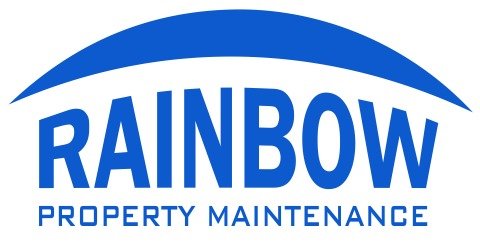Facility managers rely heavily on third-party vendors to handle crucial services like janitorial, landscaping, maintenance, and security. But situations inevitably arise needing the vendors’ prompt attention and follow-through.
Requests for everyday needs – extra trash pickup after events, emergency plumbing repairs, parking lot light outage responses – require timely turnaround. And when problems occur like safety incidents, hazardous spills, or quality breaches, facility managers expect conscientious accountability from vendors.
However, some vendors drag their feet on requests and fail to take ownership of issues. Slow, passive responses frustrate facility managers who need agile partners.
Two key strategies drive greater accountability and responsiveness:
- Service level agreements (SLAs) with defined timelines
- Escalation procedures for unresolved issues
Why Vendor Responsiveness Matters
Before diving into solutions, it’s important to understand the business impacts of vendor foot-dragging:
Safety hazards – Slow responses to hazards like water leaks or chemical spills risk harming occupants.
Regulatory compliance – Delayed repairs of safety systems like fire alarms could violate codes.
Property damage – Letting leaks or malfunctions worsen leads to bigger facility repairs.
Tenant dissatisfaction – Unresolved complaints about cleanliness, temperature, or parking breed frustrations.
Reputation impacts – Negative reviews or social media posts due to unresponsiveness tarnish credibility.
Higher costs – Small problems turn into bigger rework and crises without prompt attention.
Clearly, vendors’ failure to respond quickly magnifies risks and costs for facility management organizations. SLA agreements and escalation processes counter these dangers.
Establishing Service Level Agreements (SLAs)
For critical service metrics, facilities should establish SLAs outlining:
Response time – The deadline from request receipt to acknowledging
Resolution timeframe – Maximum time permitted to resolve the request
Communication protocols – Methods, frequency for updates until issue closure
Prioritization definitions – Categories like emergency/urgent/routine with corresponding speeds
Reporting procedures – How vendors log and document request details
Exemption criteria – Conditions allowing deviation from SLA like natural disasters
Performance targets – Monthly percentage of requests meeting SLAs
Incentives/penalties – Rewards for exceeding or consequences of missing SLAs
Some examples of potential SLAs are:
- Emergency repair requests – Acknowledge within 15 minutes, resolve within 4 hours
- Routine work orders – Acknowledge by next business day, complete within 5 business days
- Tenant complaints – Acknowledge within 2 hours, resolve within 24 hours
- Safety incidents – Initiate investigation within 1 hour, complete within 24 hours
- After-hours access issues – Respond within 30 minutes, resolve within 2 hours
The optimal SLA metrics will vary based on facility priorities and vendor capabilities. The key is agreeing to terms in advance rather than debating responsiveness on the fly. Define SLAs in all base contracts.
Implementing Escalation Procedures
Despite SLAs, situations will arise where vendors remain unresponsive to facility managers’ satisfaction. In these cases, a clear escalation process is needed to bring higher levels of authority into resolving issues promptly.
Initial contact – The facility manager contacts the designated vendor representative as the first point of contact.
Escalation to supervisor – If unresolved after the SLA timeframe, the issue gets escalated to the vendor account supervisor.
Escalation to the manager – The vendor’s operations manager gets engaged if the account supervisor cannot resolve.
Executive escalation – As a final step, the issue reaches the vendor’s executive level and facility management leadership.
At each level, the timeframe for resolution should be reduced to bring urgent focus. Like:
- Supervisor: 50% of initial SLA resolution time
- Manager: 25% of initial resolution time
- Executive: 2 hours maximum resolution time
Escalations should occur in writing via email, with phone calls as needed for immediate concerns. Facility managers should track escalation instances as a vendor performance metric.
Addressing Responsiveness Barriers
Before replacing unresponsive vendors altogether, facility managers should have candid conversations to understand and address barriers like:
- Unrealistic SLAs – Timeframes may need adjustment for achievability
- Capacity constraints – Vendors may need to expand crews and equipment
- Unclear priorities – Review processes for highlighting urgent requests
- Communication breakdowns – Identify improvements in request hand-offs
- Insufficient training – Provide clearer protocols for issue response
- Weak accountability – Reinforce individual responsibilities and penalties
- Language barriers – Address any translation needs
With patience and transparency, managers can resolve many responsiveness issues, strengthen vendor relations, and improve SLAs over time. But persistent failures to improve warrant reevaluation of providers.
Responsiveness Metrics and Reports
To track progress, facility managers should monitor:
- SLA performance vs targets by the vendor
- Average response and resolution times
- Escalation instances by level
- Responsiveness ratings in tenant surveys
Generate routine reports for vendor meetings and tie metrics to contractual incentives. Metrics visibility motivates change.
When to Pursue Vendor Replacement
If the following indicators of unresponsiveness persist despite escalations and remediation efforts, replacing a vendor may become advisable:
- Missing SLA targets over 30% of the time
- Chronic delays in responding to priority emergencies
- Regular tenant complaints going unaddressed
- Multiple regulatory violations from delayed repairs
- Resistance to requested improvements like added staff or equipment
- Denial of responsibility and lack of accountability
At some point, unresponsive vendors must face consequences, up to and including contract termination.
Key Takeaways
The keys to driving vendor accountability include:
- Establishing clear SLAs aligned with facility priorities
- Implementing escalation procedures to resolve ongoing issues
- Analyzing root causes of responsiveness failures
- Tracking and reporting on SLA performance metrics
- Willingness to replace vendors if improvements don’t occur
Responsiveness and accountability are the foundations of reliable vendor relations. Facilities unwilling to settle for less than outstanding set their sites up for success.












